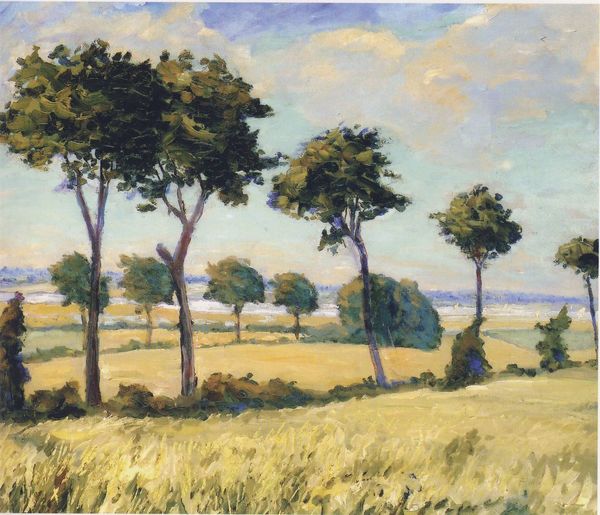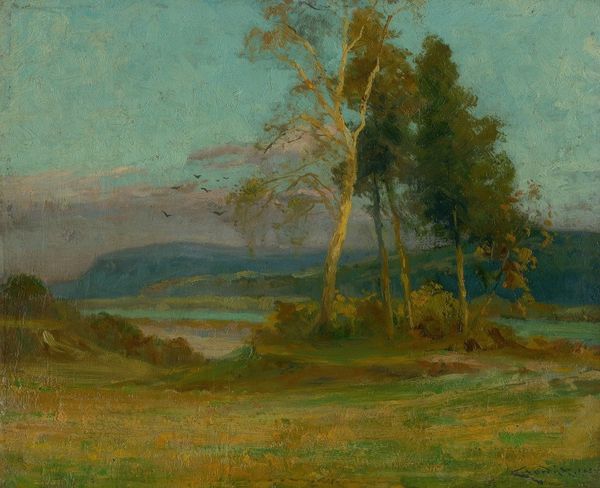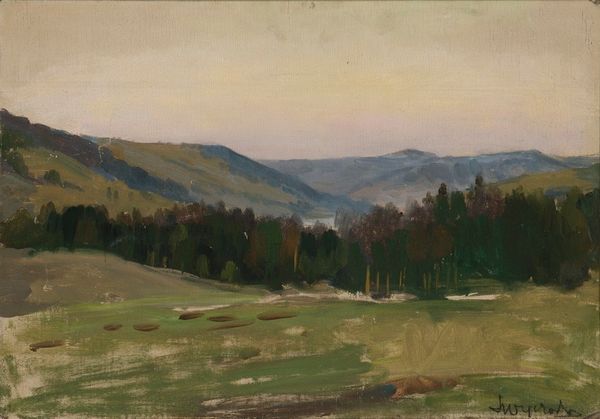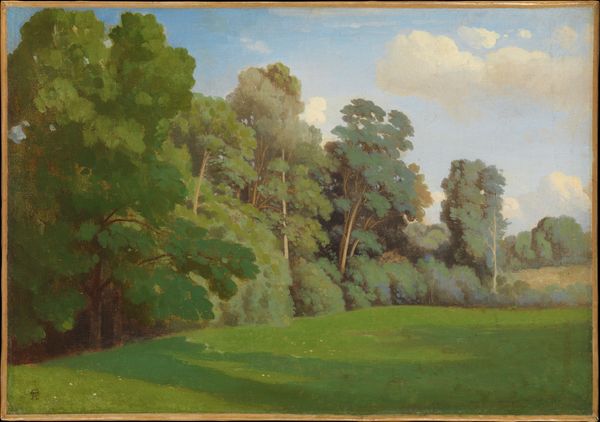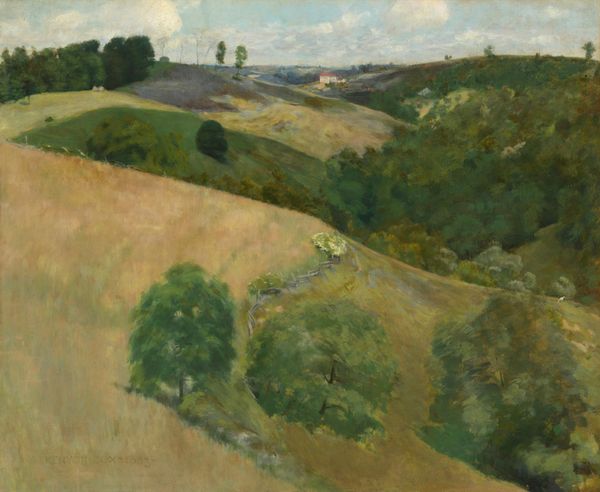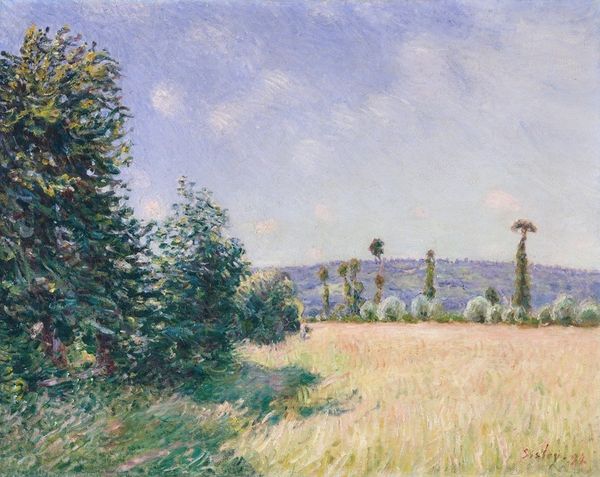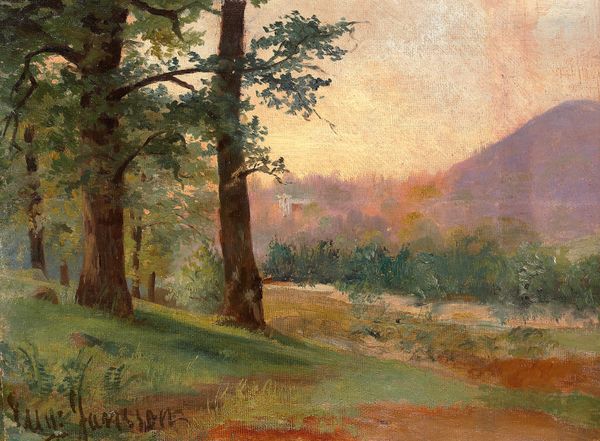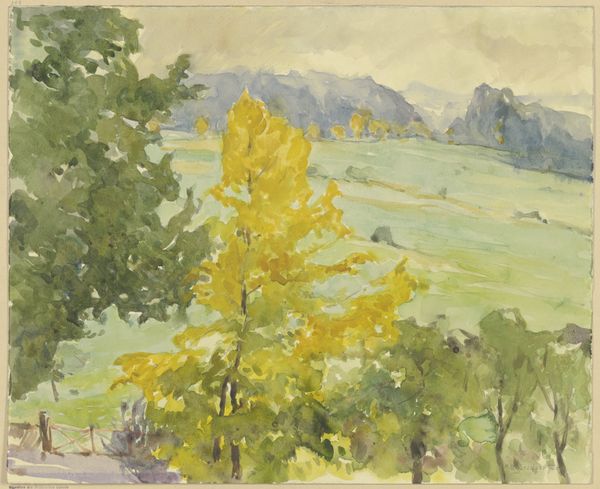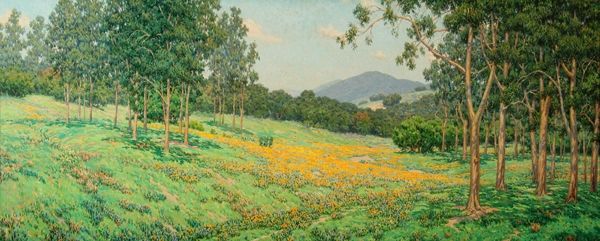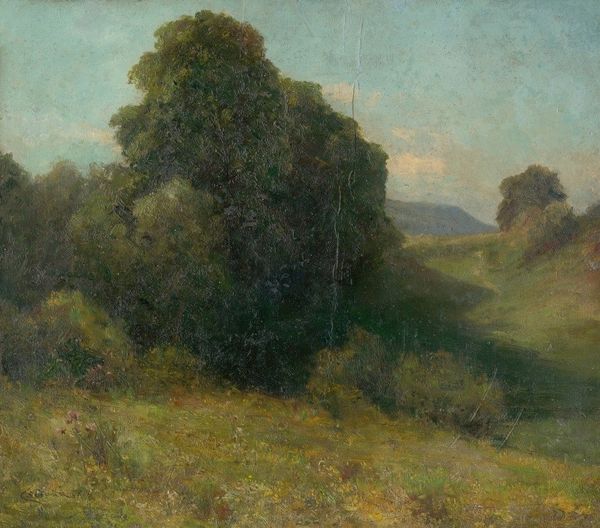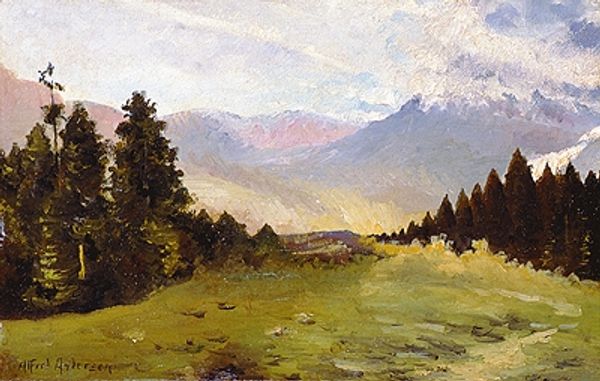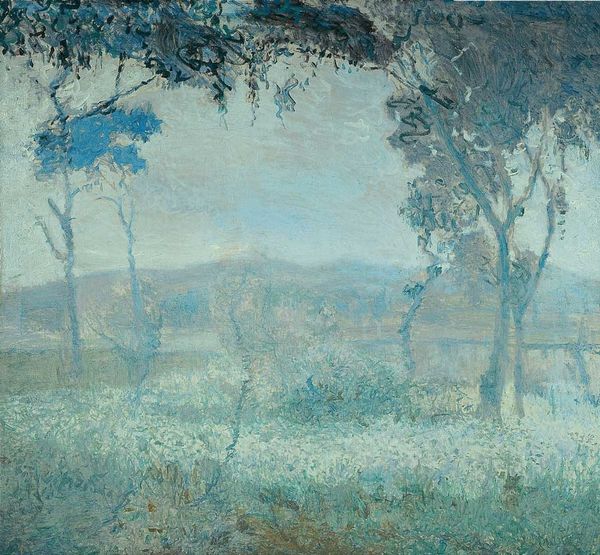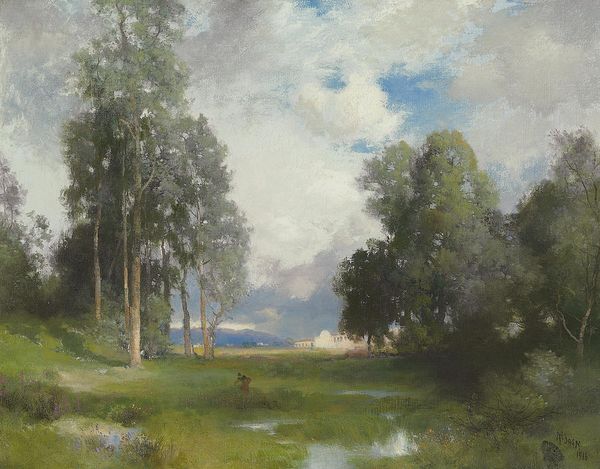
Dimensions: 45.5 x 32.5 cm
Copyright: Public domain
Curator: So, here we have Ferdinand Hodler's "Landscape with two small trees," painted in 1893 using tempera and watercolor. It's interesting, isn't it, this delicate dance between impressionism and something… more. Editor: It’s incredibly soothing, like a memory gently resurfacing. The soft, almost muted tones give it an air of nostalgia. What I see, instantly, is a place to breathe. It almost seems to predate the anxieties of the twentieth century. Curator: Indeed. Hodler's landscapes often do possess that quality. It is true he sought to capture not just the outward appearance, but also the emotional and spiritual resonance of a scene. We see here a clear horizon, which represents, of course, a path forward. Yet I think what separates him from the pack is the deep interest in nature, not merely as subject, but as a mirror to universal human experience. Editor: Right. And these "universal" human experiences, situated within late 19th century Switzerland, were experiences marked by rising industrialization, shifting class dynamics, and a burgeoning sense of national identity. This "simple" landscape becomes almost radical in its evocation of pastoral tranquility—a subtle protest, perhaps, against the disruptive forces of modernity. I wonder too, about gender within the visual landscape: were these male spaces? Female? How do class structures operate? These sorts of artworks are almost coded in their representation. Curator: An interesting point—you're reading a whole story in the slight bending of those saplings! To me, it also speaks to Hodler’s artistic temperament. You sense the artist outdoors in the moment, but the colors, those gentle greens, they don’t reflect hyper-reality so much as internal perception. Almost symbolic…the tempera is not just paint on paper but some sort of ethereal medium. Editor: Yes, it feels deliberate. Even those unassuming dandelions possess, on closer view, symbolic weight, rooted within materialist existence! But there is more than a surface of pleasant nature that the artist asks us to grasp at and recognize as it shifts and changes! I cannot believe, knowing what we know now, about art's cultural capital, it does not challenge these historical, racial, and class dimensions that still operate and determine the way we see and analyze images! Curator: Well, you've certainly provided a new path through the fields of Hodler’s world for our listeners to explore. Editor: Hopefully, our analysis inspires more in-depth readings of landscapes that many would take for granted.
Comments
No comments
Be the first to comment and join the conversation on the ultimate creative platform.
